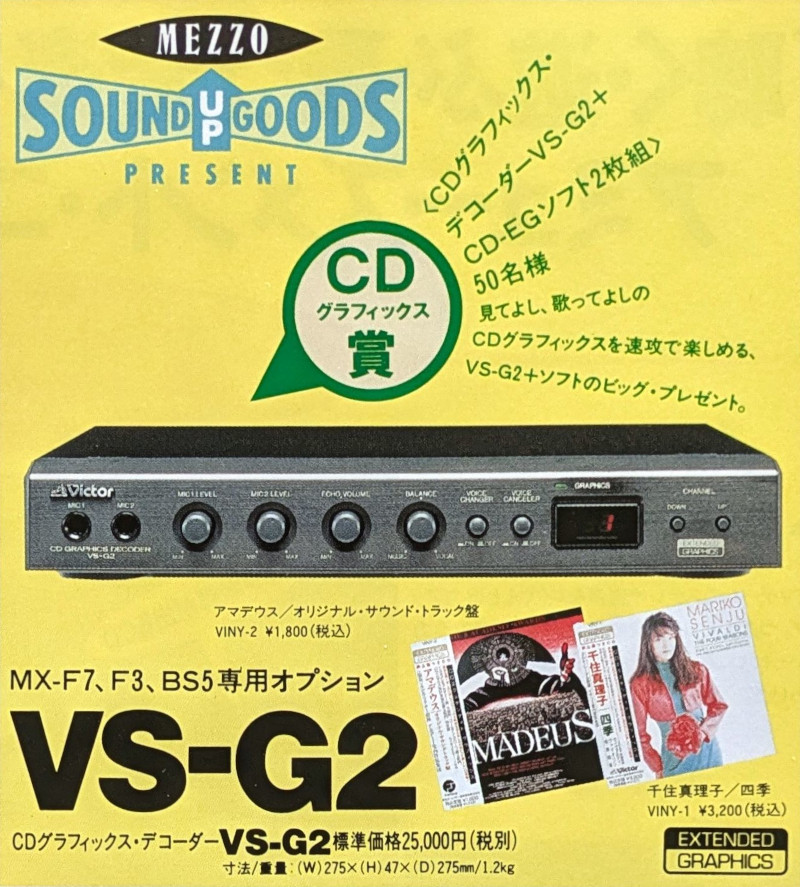
CD Extended Graphics (CD+EG, CD-EG, CDエクステンディド・グラフィックス) is an extension to the CD Graphics (CD+G) standard. The extended commands allow for more colorful images and advanced transitions. Like CD+G, CD+EG occupies otherwise unused subchannel space on a CD Audio disc, so it has the same audio capacity as a normal CD, and the audio can be played in any CD player.
After the first few discs published in 1991 and 1992, CD+EG was rarely produced. I've only found evidence for a total of 10 releases up to 1996, over half are promotional. All of the confirmed discs were made by Victor (JVC).
I got involved with collecting CD+EG in July 2024, when I ran across a copy of The CD Graphics World by Extended Graphics. I set up this page to showcase my collection, and to organize information about this rare format. Please contact me with any info you'd like to share.
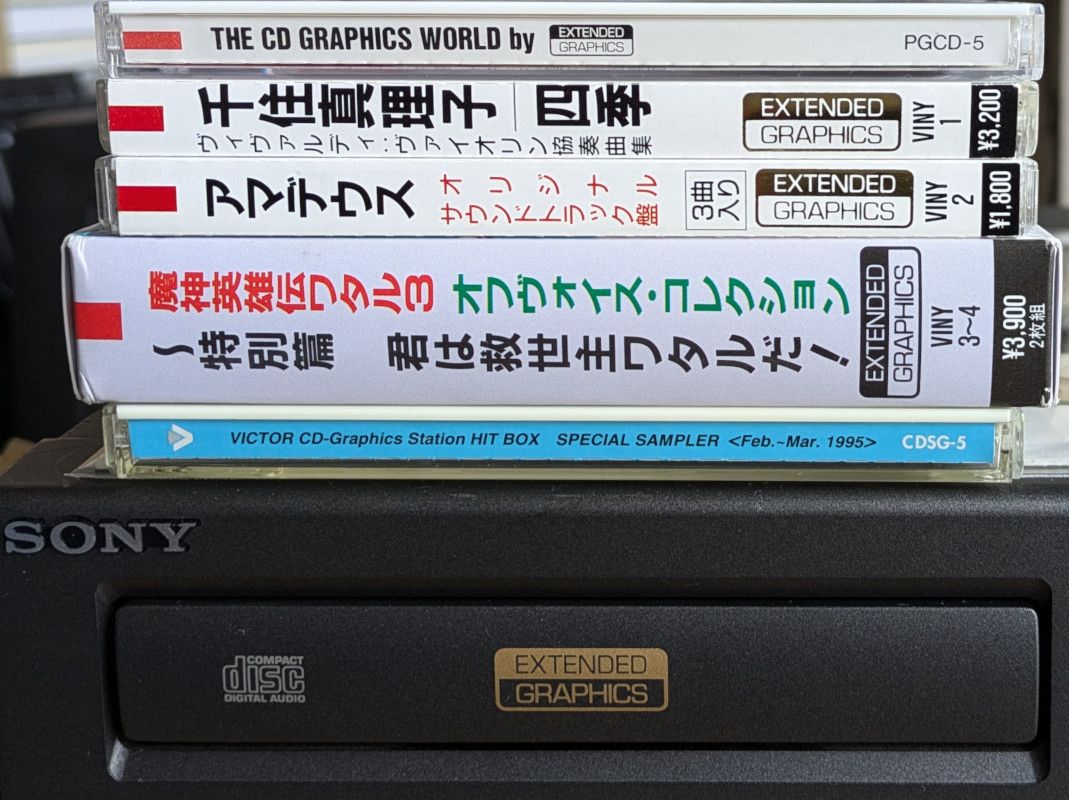
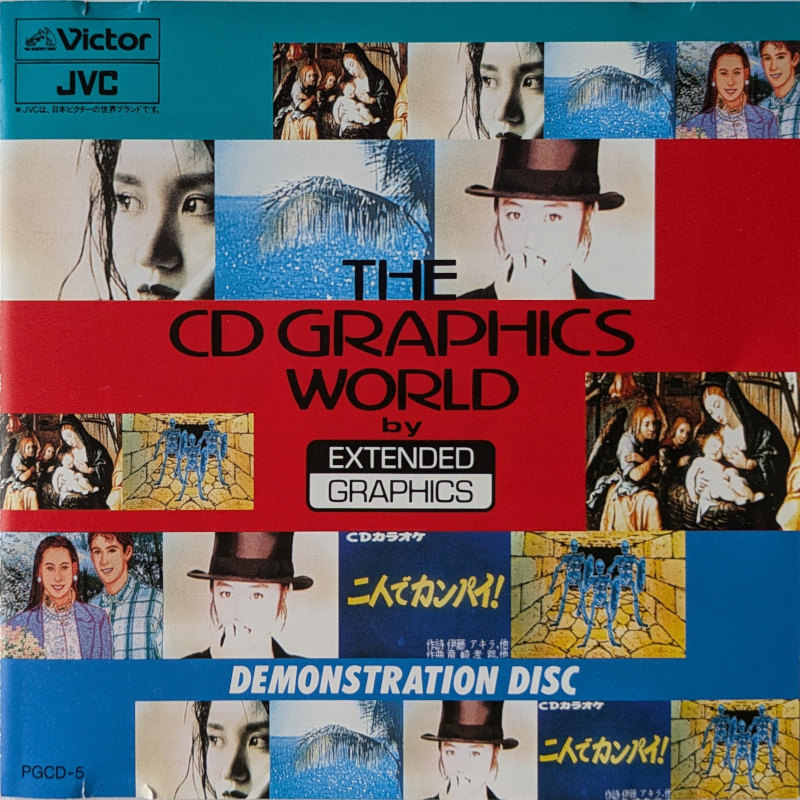
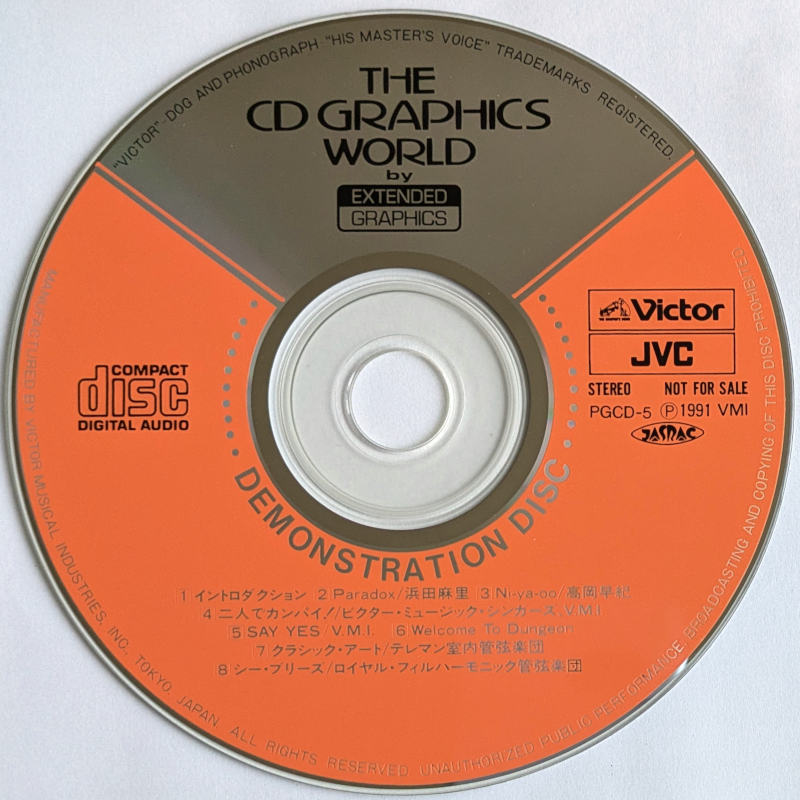
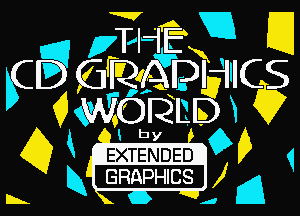
There are 3 known retail CD+EG releases, all with VINY catalog numbers. The last is VINY-3~4, released in late 1992. They were shown together alongside decoders until at least mid-1994.
From a 1992 2-4 (Spring) component catalog (Mezzo), pg. 10

From a '94.6 catalog (RobotCompo and MicroCompo), pg. 22, next to VS-G3
![from right to left showing Amadeus [VINY-2], The Four Seasons [VINY-1], and Mashin Hero Wataru [VINY-3~4]](images/RobotCompo.94.6.pg22-VINY-800.jpg)
千住真理子・四季・ヴィヴァルディ:ヴァイオリン協奏曲集
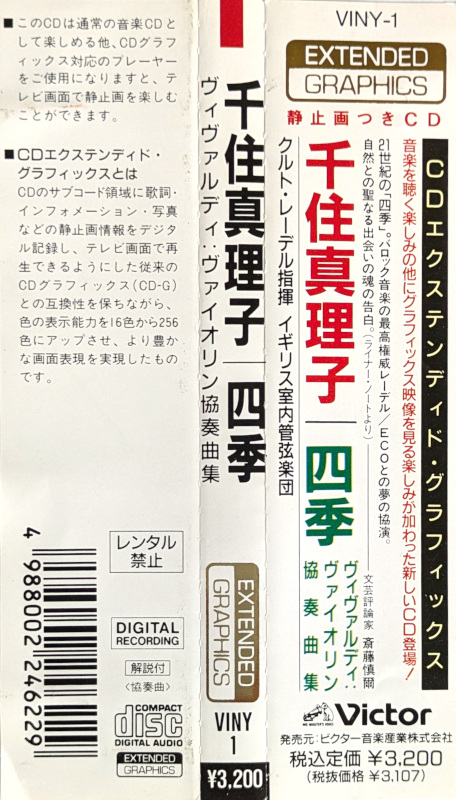
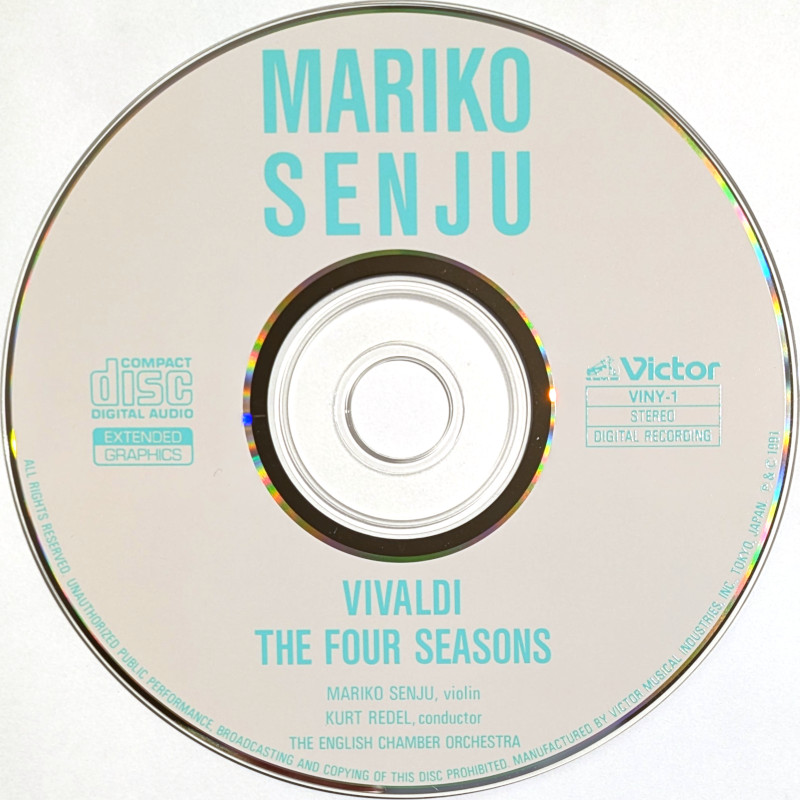
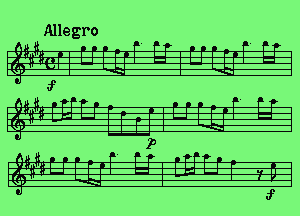

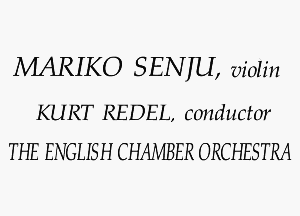
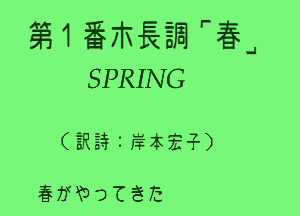
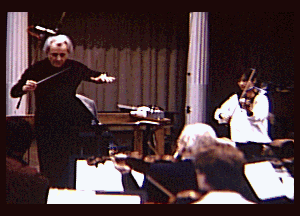
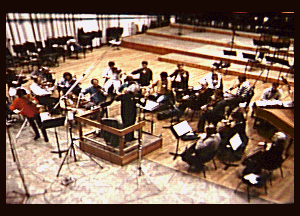
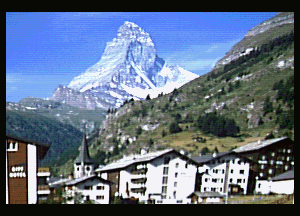
アマデウス・オリジナル・サウンドトラック盤
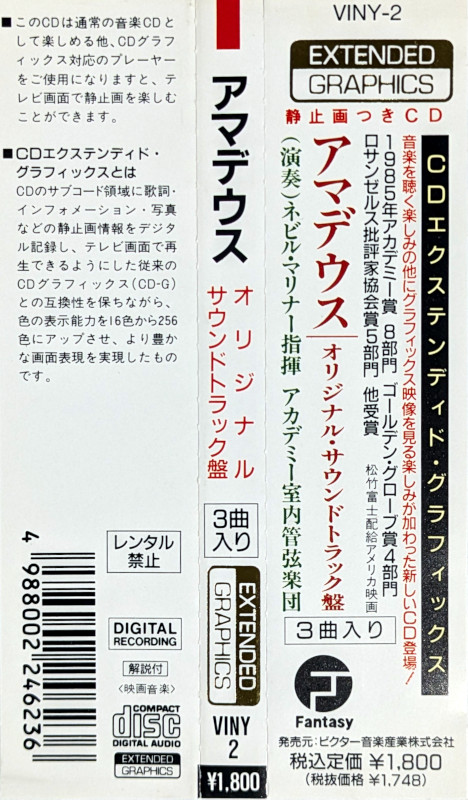
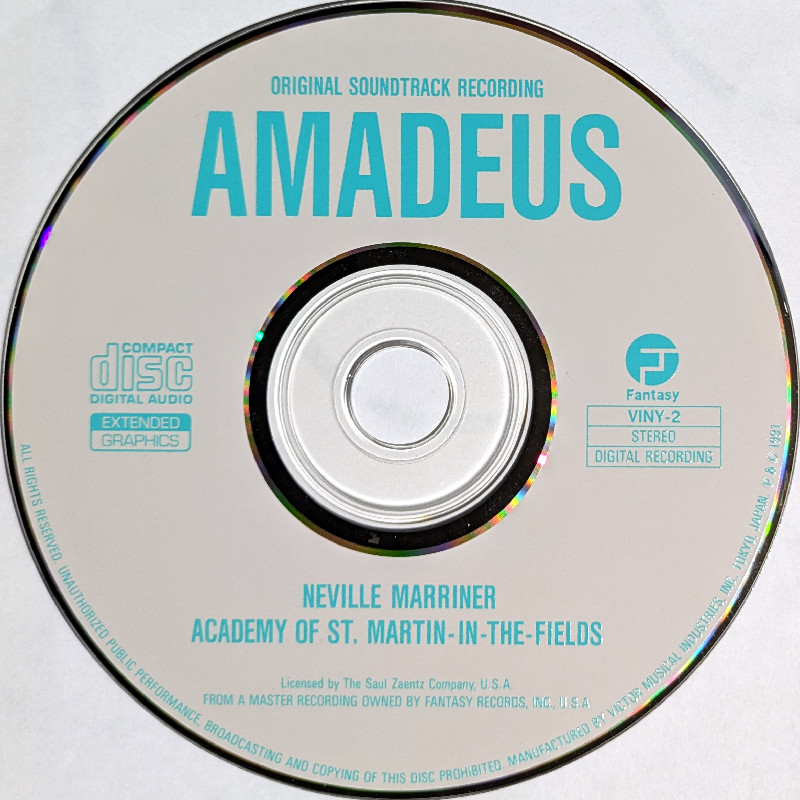
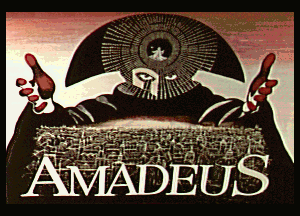
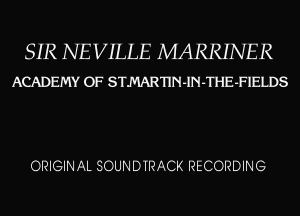
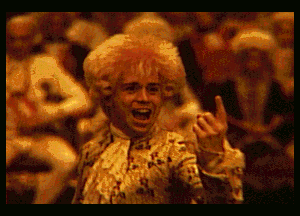
魔神英雄伝ワタル3 オフヴォイス・コレクション ~特別編 君は救世主ワタルだ!


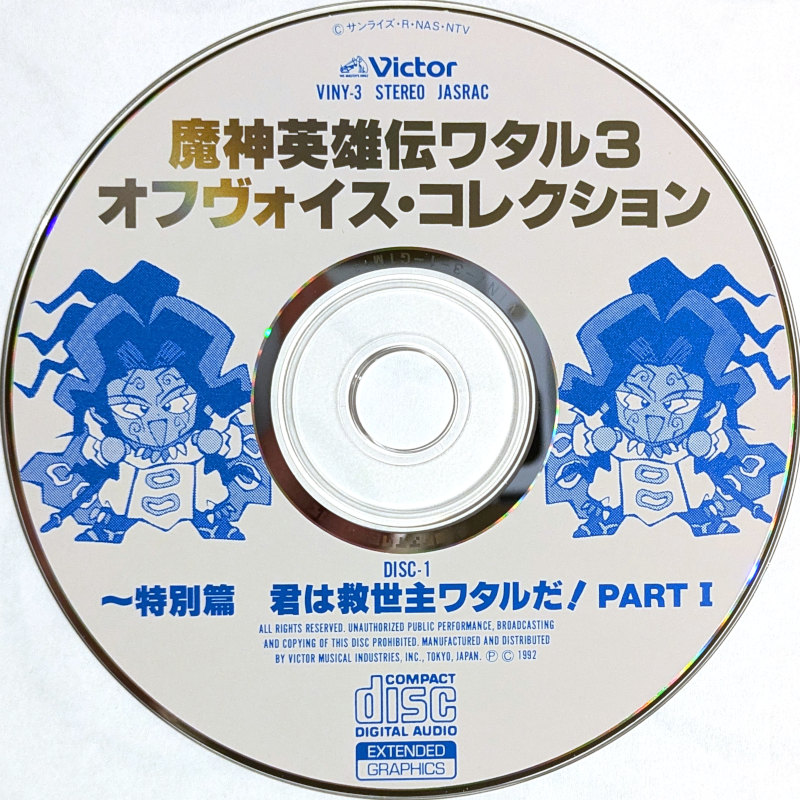
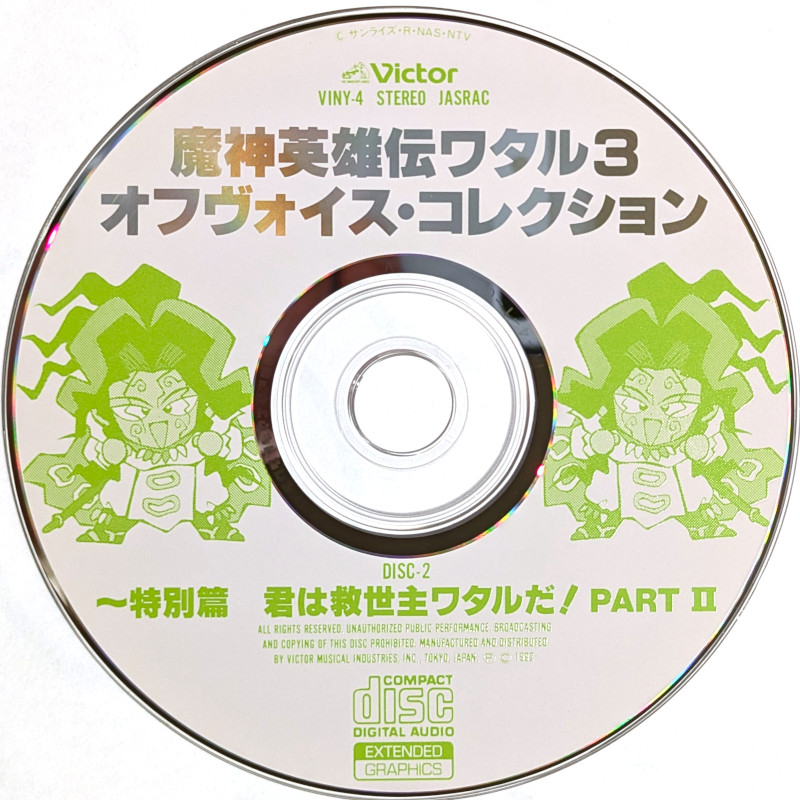
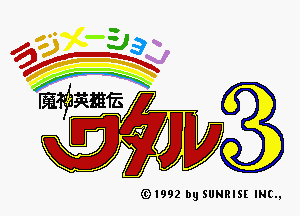
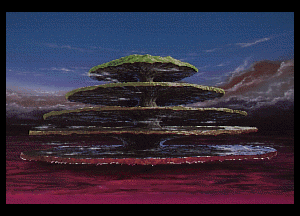
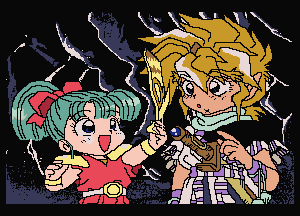
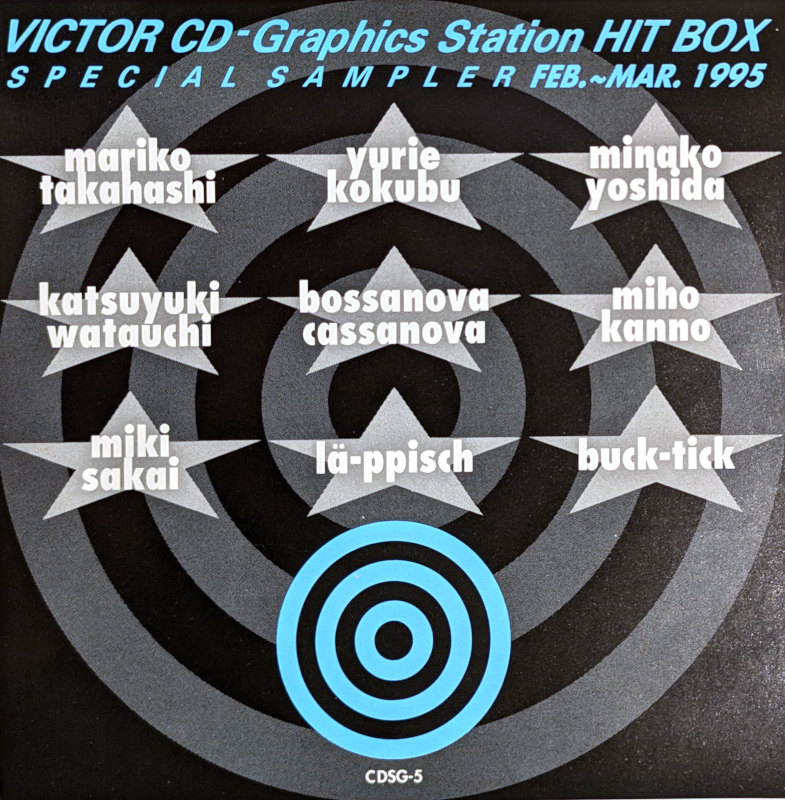
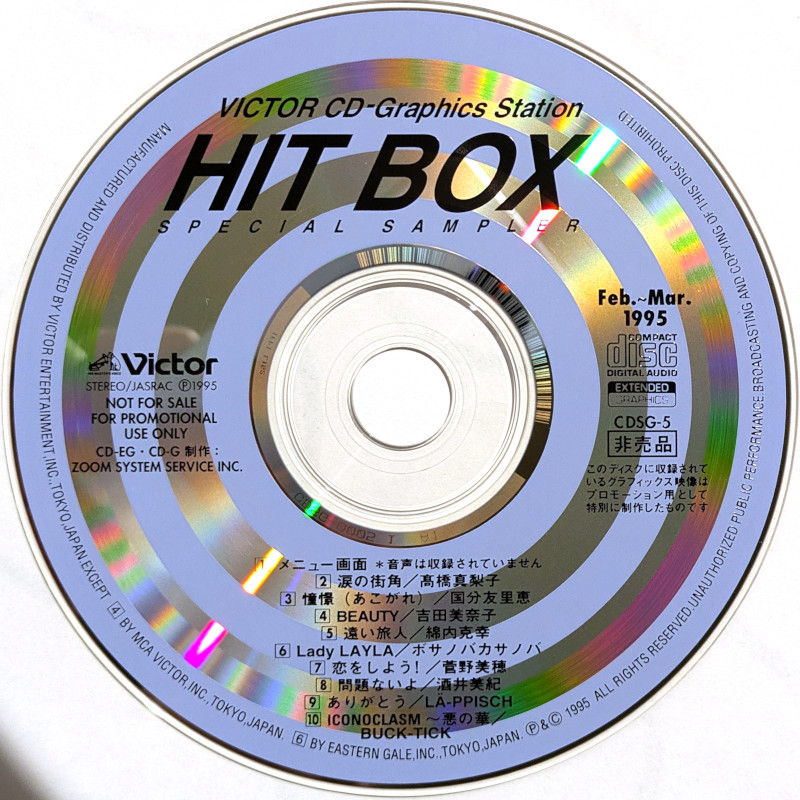
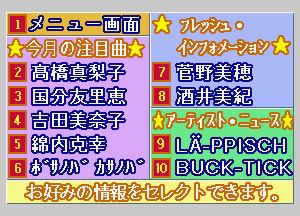

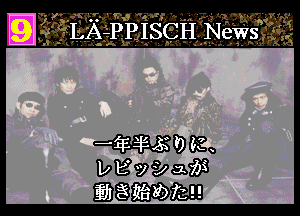
These are known or suspected CD+EG discs not in my collection.
It seems like the only difference from PGCD-5 is one of the karaoke tracks: Track 5 changed from いとしのエリー (Ellie My Love) on PGCD-4 to Say Yes on PGCD-5.
Seen sold on Yahoo Japan Auctions: listing (archived, front, back)
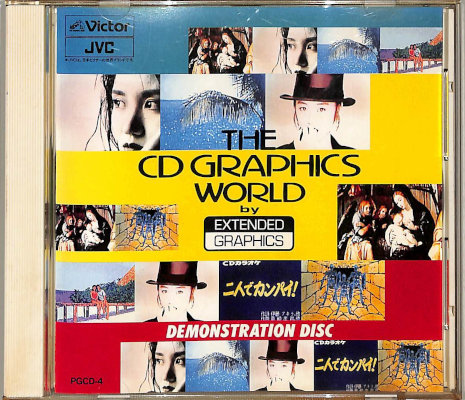
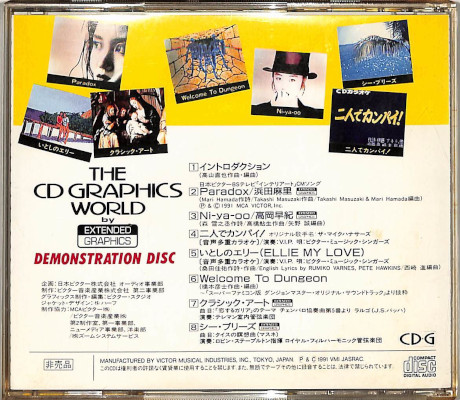
There are at least three more of these besides Feb.~Mar. 1995:
Seen sold twice on Mercari: listing 1 (archived, front, back, disc), listing 2 (front, back, disc)
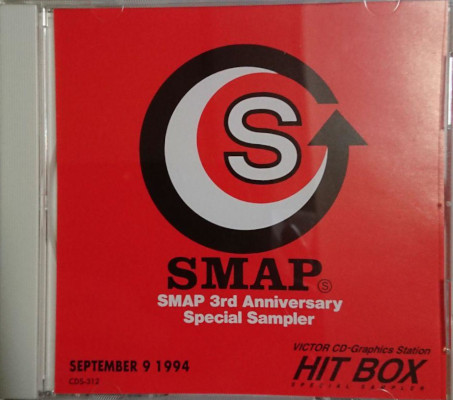
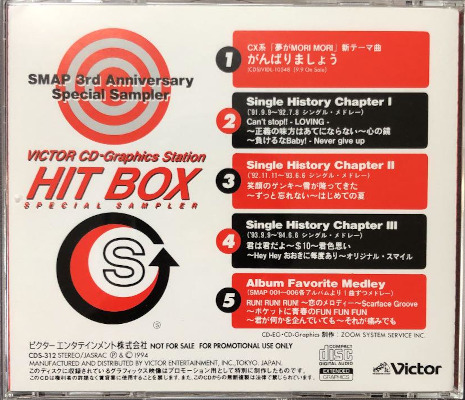
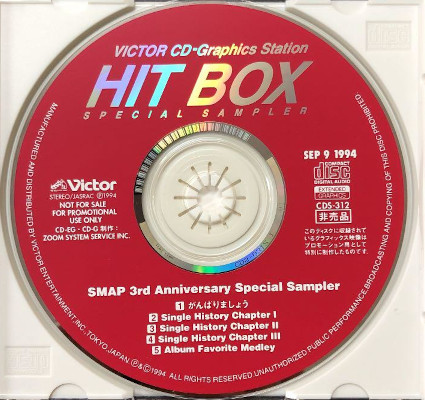
hide, Luna Sea, Schaft, The Mad Capsule Market's, The Suns, エレキブラン
Seen sold on Yahoo Japan Auctions: listing (archived, front, back)
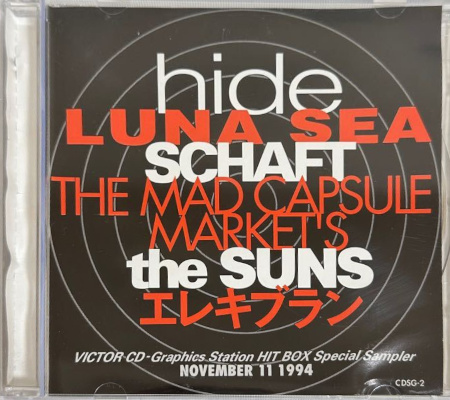
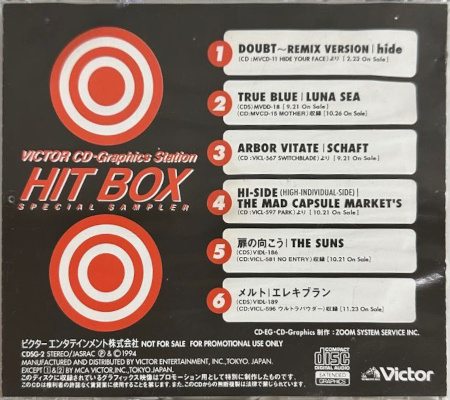
Seen in an old Yahoo Japan Auctions listing saved on Aucfan: listing (archived, front, back, disc)
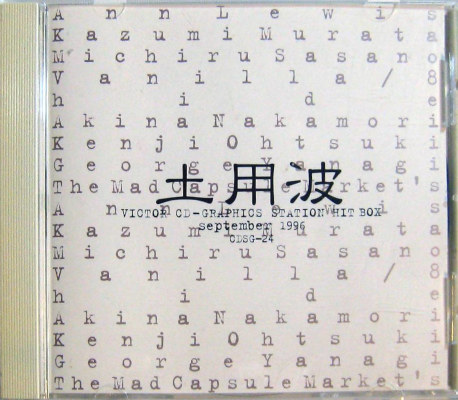
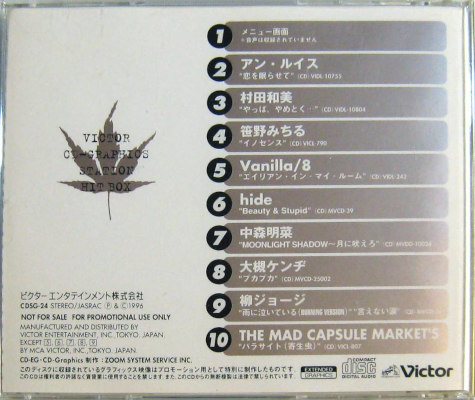
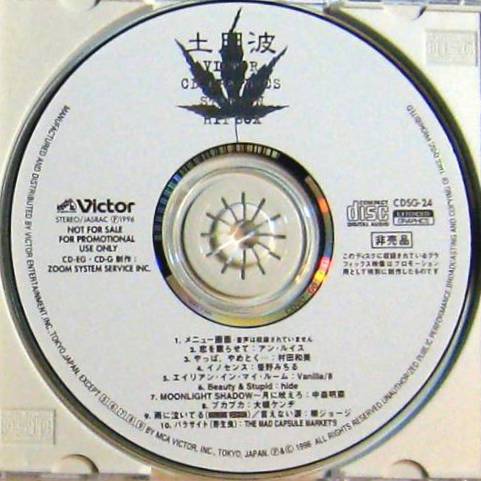
There is a 1992 bingo game from Hanayama called Rap de Bingo (ラップdeビンゴ) which includes a disc with the Extended Graphics logo. It's possible this is just a mislabeled CD+G. Barcode: 4972825192726. Seen sold on Mercari (listing, archived, box front, contents, box back, disc) and an old YJA listing saved on Aucfan (listing, archived).
CD+EG adds an extra video buffer, doubling the video memory from CD+G. This can be used for full 8 bit (256 color) graphics, or the two buffers can be used for independent 4 bit (16 color) images. When used independently, one buffer can written while the other is displaying, then they can be instantly switched. There is also a mode that allows the two buffers to be blended together, this can produce a dissolve effect, or one layer can be scrolled on a stationary background.
TODO: I intend to add more info such as: graphical techniques used on the different discs, compatibility of hardware CD+EG players, the obscure Line Graphics mode, more non-karaoke uses of CD+G, and how to accurately rip CD+G discs.